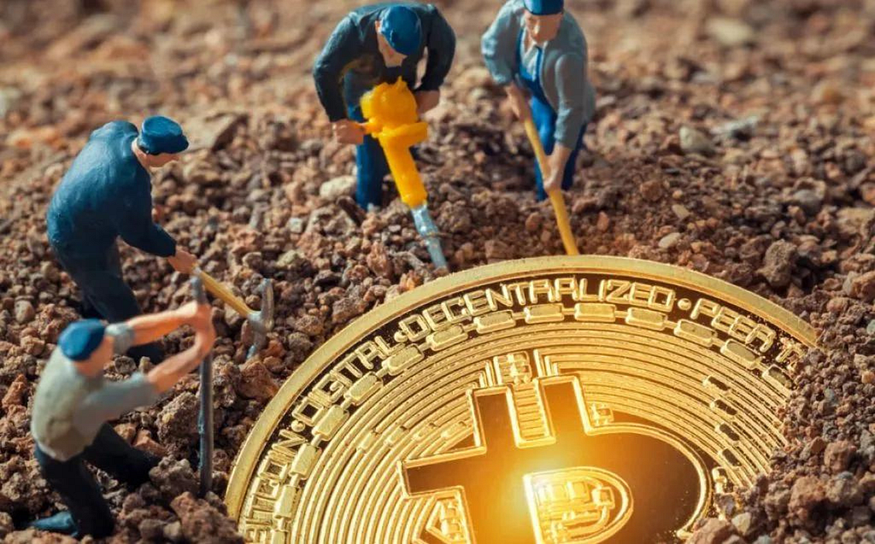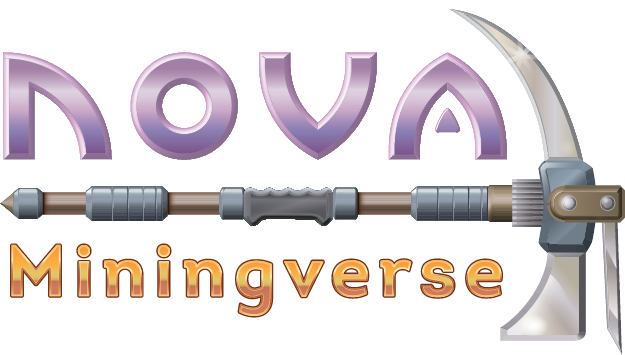
Have you ever wondered how Bitcoin was created? Or have you ever thought about investing in Bitcoin mining? Well, we are here to help you understand both of these topics in this article.
Bitcoin mining is a process by which new bitcoins are created. It involves solving complex mathematical equations that are already stored in a public database known as the blockchain. The miner who successfully solves these equations receives a block reward along with a transaction fee paid by the person who initiated the mining process. The amount of money received as a reward depends on how much work was put into solving the equation, i.e., how much electricity was spent doing so.
The reward for mining is set at 6.25 Bitcoins per block, which will halve every 210,000 blocks. This makes it a guaranteed amount of money that no one can remove from circulation. The Bitcoin protocol also places an upper bound on the number of new coins that can be created: 21 million. This means that no more than 21 million bitcoins will ever be created and that there will never be more than 4 billion total coins in circulation.
The original purpose of Bitcoin was to create an alternative monetary system that would be decentralized and independent of any government or central bank. To achieve this goal, it uses cryptography (encryption) to secure transactions and prevent fraud from happening during transactions between users across the globe.
There are several different types of Bitcoin mining hardware on the market, each designed for different purposes. Here are some examples:
- Application-Specific Integrated Circuits (ASICs): These are specialized devices designed specifically for mining Bitcoin. They are highly efficient and can be several times more powerful than general-purpose computer hardware. ASICs are typically more expensive than other types of mining equipment, but they offer the highest hash rates and are the most energy-efficient option. With an electricity cost of $0.12 per KWh, the average monthly cost for an ASIC miner would be around $20 — $50.
- Graphics Processing Units (GPUs) are specialized computer processors designed to render graphics and images. They can also be used for mining Bitcoin, although they are less efficient than ASICs. GPUs are typically less expensive than ASICs and are more versatile, as they can also be used for gaming and other applications. With an electricity cost of $0.12 per KWh, the average monthly cost for a GPU miner would be around $80 — $120.
- Field-Programmable Gate Arrays (FPGAs): These are programmable integrated circuits that can be configured to perform a wide range of tasks. They are less efficient than ASICs but more energy-efficient than GPUs. FPGAs are also more expensive than GPUs but less expensive than ASICs. With an electricity cost of $0.12 per KWh, the average monthly cost for an FPGA miner would be around $50 — $80.
- Central Processing Units (CPUs): These are the processors found in most computers. They can be used to mine Bitcoin, but they are the least efficient option and are not recommended for large-scale mining operations. With an electricity cost of $0.12 per KWh, the average monthly cost for a CPU miner would be around $150 — $200.
- Cloud Mining: A miner can also rent mining power from a company that maintains a data centre and provide cloud mining services. These services usually offer a more flexible way of mining and are less expensive than owning your equipment, but in the long run, it may not be profitable and the company might not be trustworthy.
A miner must connect their computer to the pool’s node via USB or network cable before they can start mining; this process is known as “signalling.” They then run a program on their computer, automatically grabbing new transaction blocks as they appear and feeding them into the pool’s node in return for rewards from their share of mined blocks’ fees distributed among all members according to how much work each contributed during specific periods of time (typically around).
In conclusion, the choice of mining equipment will depend on several factors, such as budget, electricity cost, and desired level of investment. ASICs are the most efficient and powerful option, but they are also the most expensive. GPUs and FPGAs are less efficient, but they are also less expensive and more versatile. CPUs are the least efficient option and are not recommended for large-scale mining operations. Cloud mining is a more flexible way of mining but it may not be profitable in the long run and the company’s trustworthiness is uncertain.
Just to conclude, and make a quick calculation, if you want to be profitable in the short-term in mining as a company, you will pay around 1000$ weekly on a variable cost, apart from the initial investment. It’s also worth mentioning that the cost of electricity is not the only cost associated with mining, you also need to factor in the cost of the equipment, cooling and maintenance, as well as the cost of internet and other expenses.
In Nova, part of these processes is already optimized in the Free Industrial Zone of Tbilisi, where field-referents such as Bitfury, saw the potential of this territory when it comes to energy costs (renewable sources) and cooling (temperatures below zero during winter and soft autumns and springs), apart from the regulatory advantages.
Keen to learn more?
Read the Nova Miningverse Whitepaper
Stay close: Telegram | Nova Miningverse Twitter | LinkedIn | Website | YouTube | Discord

